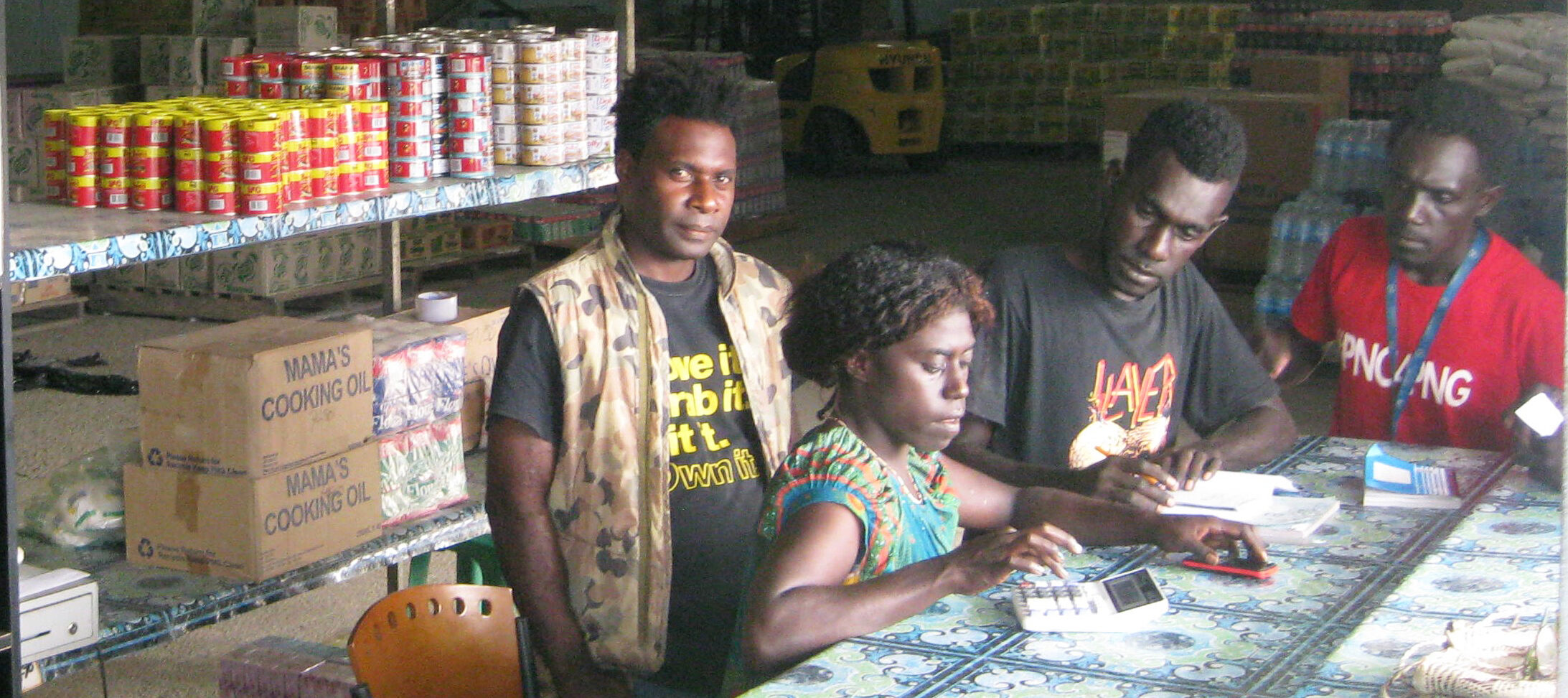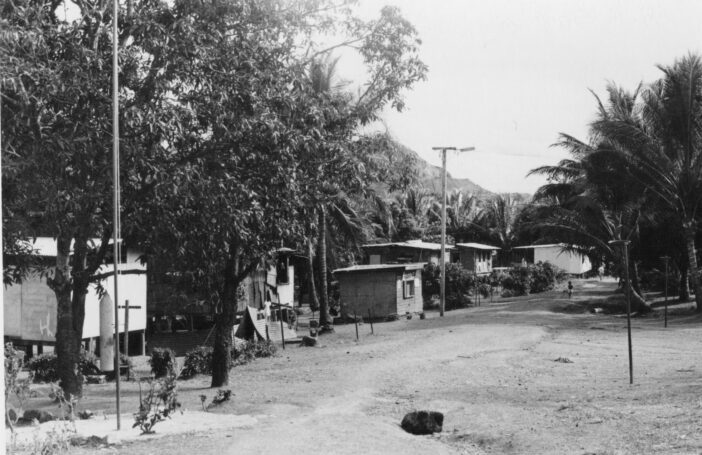PNG’s minimum wage has been K3.50 per hour (K28 per eight-hour day) since July 2016. However, prices of food and non-food items have continued to increase over time. Consequently, urban minimum-wage earners in the first quarter of 2025 could purchase one-quarter less food and other goods and services compared to July 2016 — a significant reduction in purchasing power for low wage-earning individuals.
As a short-term fix, in June 2025, PNG’s Internal Revenue Commission took steps to reduce food prices by eliminating the 10% Goods and Services Tax (GST) on some essential goods. As a longer-term objective, the PNG government is currently reviewing the minimum wage mandated by law. Minimum-wage laws aim to protect low-wage workers and are commonly established considering a myriad of factors including the cost of attaining a basic standard of living.
Arguably, a basic standard of living should incorporate the ability to achieve food security, which the UN Food and Agriculture Organization (FAO) defines as the ability to afford “nutritious food to meet dietary needs and food preferences for an active and healthy life”. To assess the affordability of nutritious diets in urban PNG, we adopt the Cost of a Healthy Diet (CoHD) indicator to measure the daily minimum cost for one adult to purchase a diet that aligns with dietary guidelines. We then compare the CoHD to the current daily minimum wage (K3.50 per hour) and a hypothetical increased minimum wage of K5 per hour (K40 per eight-hour day).
We calculate the CoHD using a healthy reference diet for PNG (composed of sweet potato, rice, the least expensive two vegetables in a market at a given time, ripe banana, tinned fish and coconut) alongside urban food prices collected by the Fresh Produce Development Agency across six markets (Port Moresby, Lae, Goroka, Mt Hagen, Banz and Kokopo) since 2021. We also consider a hypothetical scenario where no GST is imposed on tinned fish or rice.
Increasing the minimum wage and removing the GST might influence the price of goods and services by changing costs and shifting consumer demand. For example, increasing the wages of workers in the food value chain (drivers, packers, supermarket workers, and so on) can affect final food costs. This analysis does not consider these dynamics, but rather assumes prices remain constant in the short term.
Figure 1 shows that the average urban PNG CoHD increased from K7.70 in the first quarter of 2021 to K10.37 in the first quarter of 2025 — an increase of 35%. Importantly, the rising cost of the CoHD outpaced general inflation (16%) and food inflation (28%) — suggesting that nutrient-dense foods that make up a healthy diet may be increasing in price at a faster pace than typical diets in PNG.
Figure 1 also shows the CoHD in the first quarter of 2025 without the GST (red bar). Removing the GST reduces the average urban PNG CoHD by 5% from K10.35 to K9.87.

As the cost of food rises, the amount of food that can be purchased with the fixed minimum wage declines. Figure 2 shows the number of adults that a full-time urban minimum wage earner could feed per day using an entire day’s wage (allocating no money to non-food expenses). Minimum-wage workers in Port Moresby in 2021 could feed 3.3 adults with a healthy diet, whereas minimum-wage workers in Lae, Kokopo and the Highlands could feed 4.4 to 4.8 adults per day, reflecting the lower food prices that urban workers experience in markets outside of Port Moresby. On average, across all markets, a full-time urban minimum wage earner could feed one less adult in 2025 (2.7 adults) compared to 2021 (3.6 adults).

Another way to think about the information presented in Figure 2 is to consider the number of wage earners required to feed a healthy diet to a representative family of five for one day if their total earnings were spent on food, with no wages remaining for essential non-food expenses such as clothing, shelter, transportation, health and education. A representative family of two adults and three children have the same food needs as about four adults. Whereas one full-time minimum-wage earner could nearly purchase enough healthy food for a family of five in 2021, 1.5 full-time minimum-wage earners would be required in 2025, leaving little money for non-food essentials.
Figure 3 explores how government policies can improve the affordability of nutritious foods by increasing the purchasing power of urban minimum-wage earners. Removing the GST (yellow bar) slightly improves purchasing power, however raising the minimum wage from K3.50 per hour (orange bar) to K5 per hour (green bar) would allow a full-time urban minimum wage earner to feed one additional adult per day — 2.7 adults versus 3.9 adults, respectively.

Raising the minimum wage could improve the purchasing power of wage earners to acquire balanced and nutritious diets for their households. A wage of K5 per hour in 2025 would reverse declining purchasing power due to healthy-diet price inflation that has occurred since 2021, lowering the number of minimum-wage earners in 2025 needed to feed a family of five a healthy diet from 1.5 adults (current minimum wage) to one adult. A family of five with two adults earning K40 per day could devote half their earnings to purchasing a healthy balance of nutritious food and devote the other half to purchasing essential non-food items.
It was announced on 18 September 2025 that PNG’s minimum wage will increase to K5 on 1 January 2026.





Thanks for this analysis. I see it was announced that the MW will rise to the hypothetical K5 in the piece on 1 January 2026. The scope of the analysis is clear (i.e. one urban FT MW earner with dependents and the CoHD), but this is probably too narrow a frame to make a compelling argument for a raise without any discussion of the actual number of people it will affect (how many are actually known to be on and paid MW) and any potential implications for employment and compliance, in terms of following it or going informal.
I was looking into the literature on this recently for another project in another country and found these two pieces helpful:
https://docs.iza.org/dp15340.pdf
https://www.sciencedirect.com/science/article/pii/S0305750X20302928
In terms of the analysis, it seems the crucial determinants of food security status above is household type. That is, whether one young person living in the city, a dual earning couple, and whether and how many children and dependents, all of which we can observe but give rise to a wide degree of heterogeneity in thinking who to optimise welfare floors with respect to.
Thanks for an interesting read, and I hope people are planning to collect data on the impacts of the MW rise in addition to the GST exemption!
Ryan
I wish to know more about this subject.
Thank you for your interest! You can learn more in our research note on this topic which you can find here. https://hdl.handle.net/10568/175410